Strawberry Glaze is the easiest topping to add to your baking repertoire that'll add some sweet strawberry flavor to your favorite bakes! Who doesn't want to decorate their desserts with a gorgeous, shiny red drizzle?
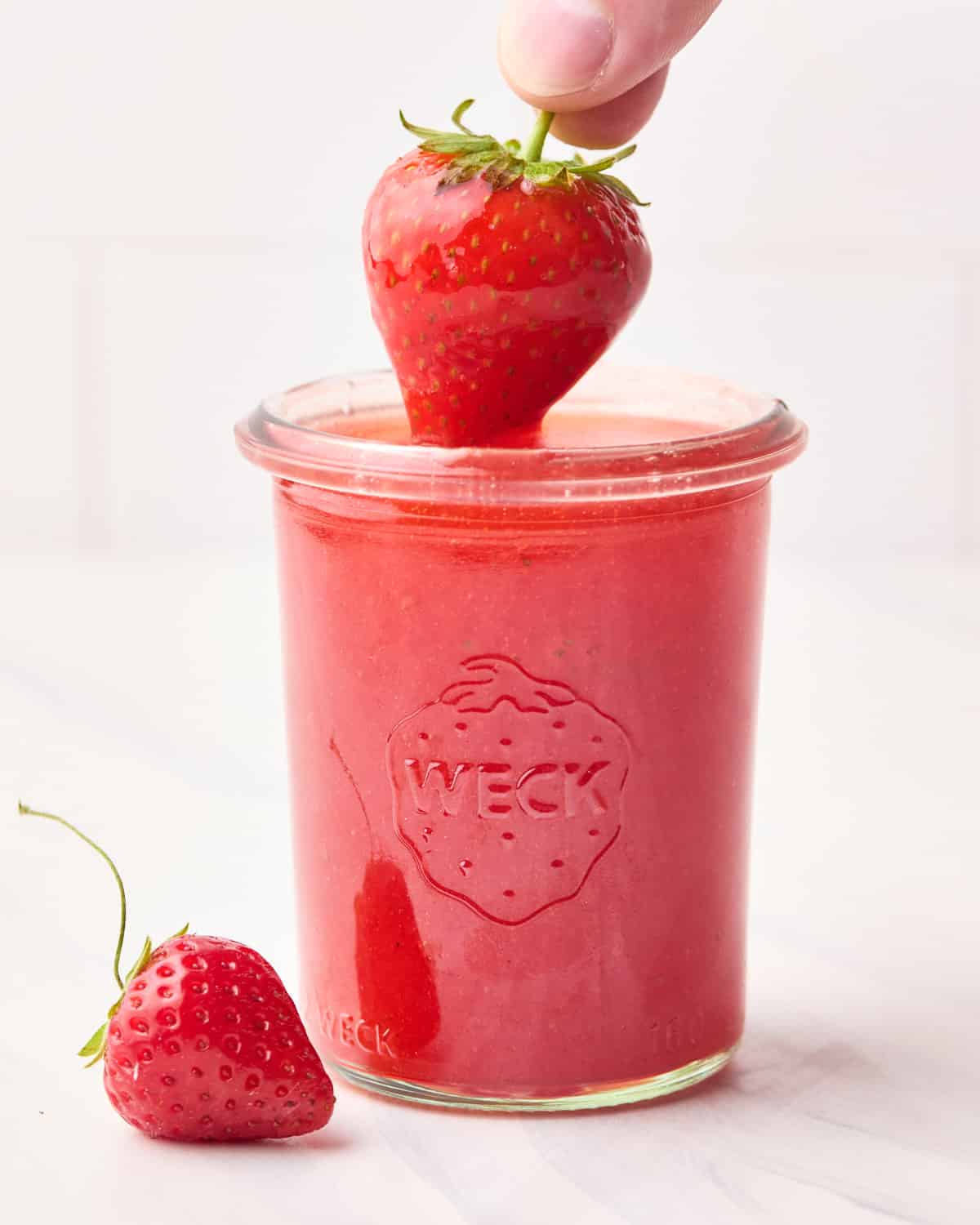
If you've got a punnet of fresh strawberries or a freezer full of frozen strawberries, this recipe is for you! This strawberry glaze is exceptionally quick and easy to make, uses just 3 simple ingredients, and can be used in so many wonderful ways.
Whether you need a sauce to drizzle over a dessert, or a fresh glaze to sweeten up your breakfast, this delicious strawberry glaze is great to have on the go - in the fridge or in the freezer! It's a sticky, sweet, and shiny topping that's bursting with real strawberry flavor.
Jump to:
- Why You'll Love This Strawberry Glaze Recipe
- What is Strawberry Glaze?
- Homemade Strawberry Glaze Ingredients
- How To Make Strawberry Glaze
- Strawberry Glaze Recipe Tips
- How To Use Strawberry Glaze
- Strawberry Glaze vs Syrup and Puree
- Troubleshooting
- Strawberry Glaze Recipe Variations
- How to Store Homemade Strawberry Glaze
- FAQs
- Recipes With Strawberry Glaze
- Recipe
Why You'll Love This Strawberry Glaze Recipe
- Made with 3 ingredients and only takes 10 minutes.
- Can be made all year round with fresh or frozen strawberries.
- A versatile way to add a professional finish to so many desserts.
What is Strawberry Glaze?
Strawberry glaze is a light, glossy topping made by cooking strawberries with sugar and a bit of cornstarch to help it thicken. It's smoother than purée, not as thick as jam, and sets with a beautiful shine - ideal for finishing fruit tarts, cheesecakes, doughnuts, or fresh fruit.
Homemade Strawberry Glaze Ingredients
This easy recipe requires just 3 simple ingredients.
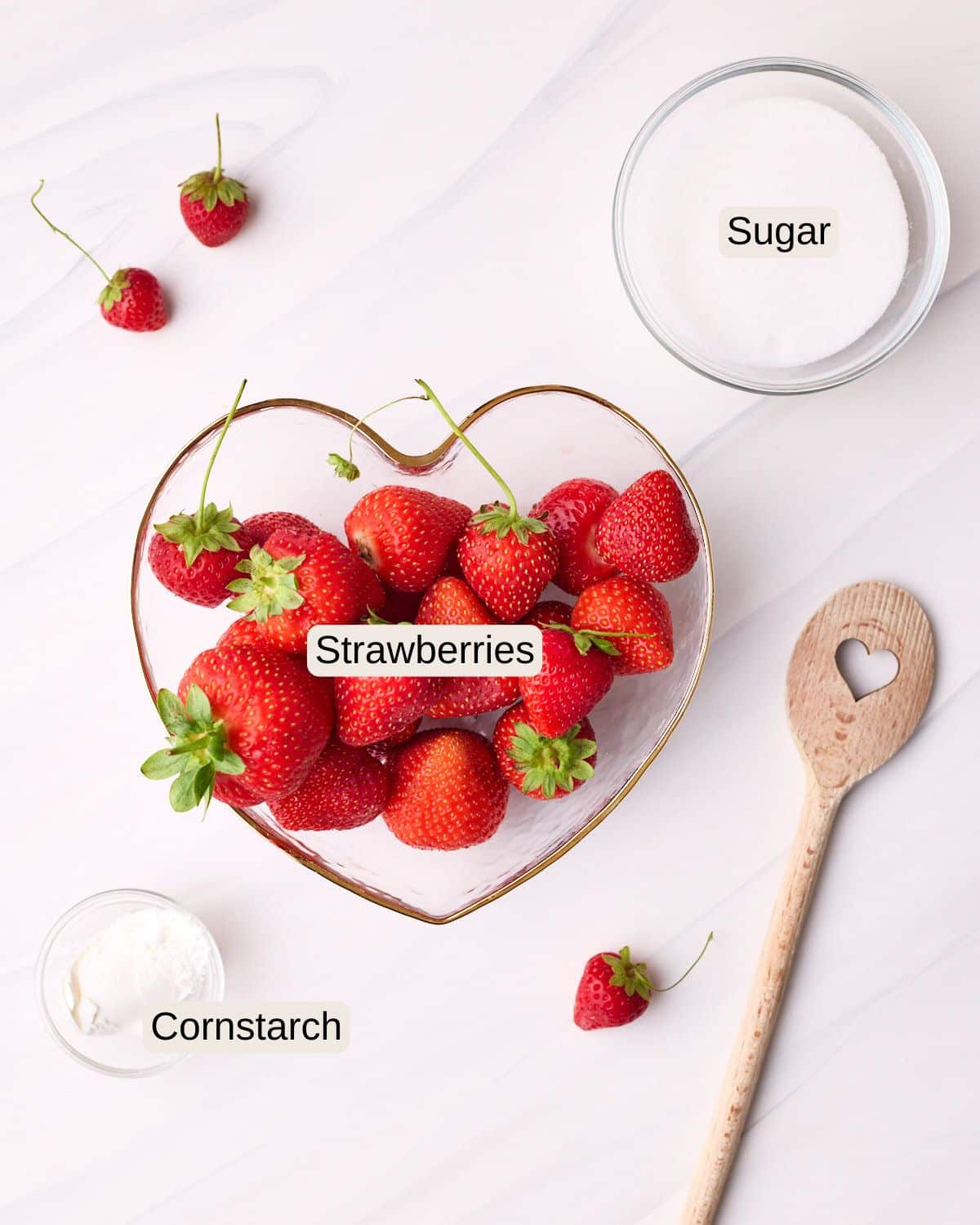
- Strawberries - You can use fresh strawberries in the summertime (or when they are in season in your country), or frozen during the off-season. Frozen strawberries do release more liquid, so may take a few minutes longer to thicken.
- Sugar - Granulated sugar is used in this recipe, but you can also use powdered sugar for a more clear, glassy glaze.
- Cornstarch - This will thicken the glaze up a little, and help it set.
See the recipe card for quantities.
Recommended Equipment
- Saucepan
- Potato Masher - Alternatively, use the back of a spoon to break down the strawberries a little.
- Fine Mesh Strainer
- Wooden Spoon
How To Make Strawberry Glaze
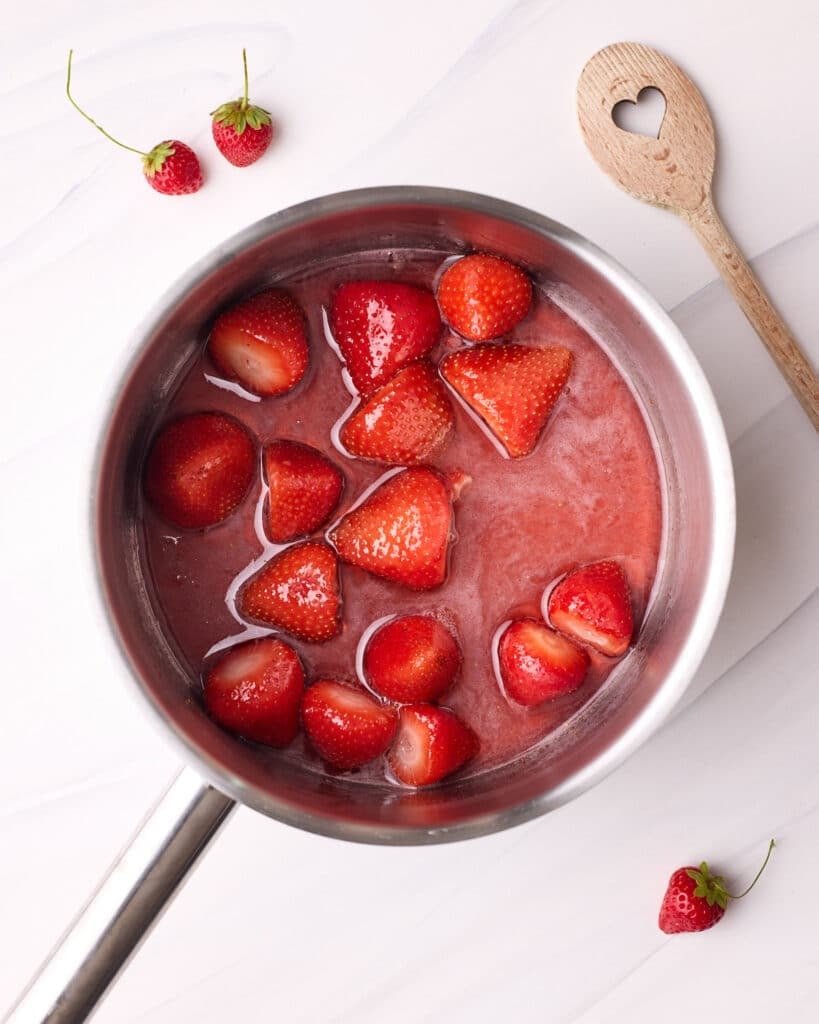
Prepare the Strawberries
Wash and hull the strawberries, and add them to a small saucepan along with the sugar.
Stir the cornstarch into the water to make a slurry, then add that into the saucepan too.
If you want a nice, clear glaze, I recommend using whole strawberries (not halved or quartered) as slicing them releases more pulp, making the glaze cloudy. However, if you're not bothered about clarity and want the glaze to cook faster, you can halve or quarter the strawberries.
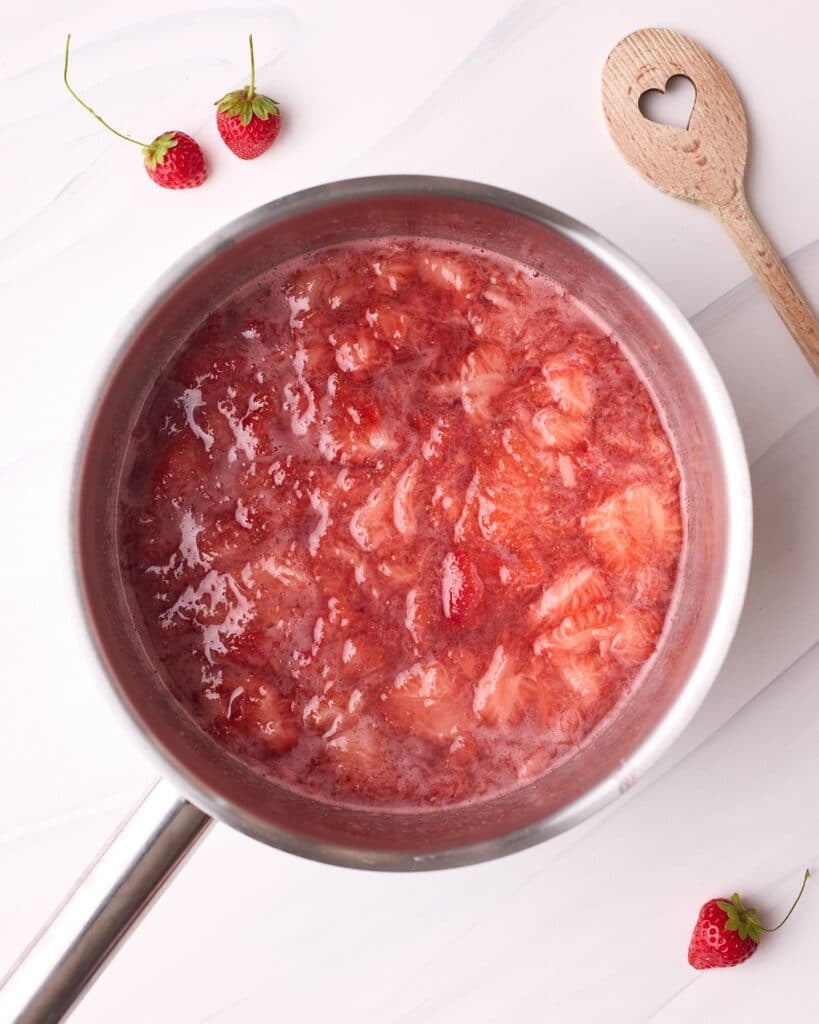
Dissolve Sugar
Heat the saucepan over medium-low heat, stirring constantly with a wooden spoon. As the mixture heats, the sugar will dissolve and the strawberries will start to soften and release juice.
After a few minutes, you'll notice the liquid becoming rosy and slightly thicker.
The strawberries should be softened now and starting to break down. Gently mash them with a potato masher or the back of your spoon - you don't want to mash them to a pulp, just help them break down a little and release their lovely juices.
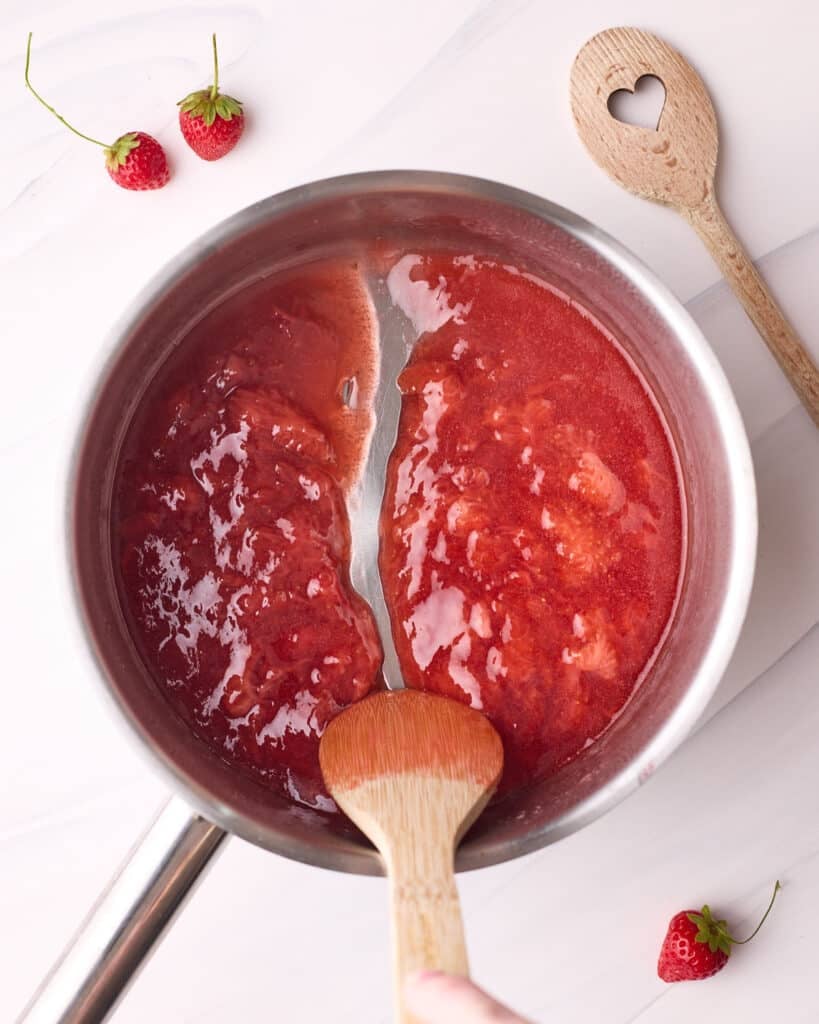
Simmer
Continue heating, stirring constantly until the mixture visibly thickens to a syrupy consistency. Once you see thick, slow bubbles bursting on the surface, test if it's ready by running your spoon or spatula along the bottom of the pan.
If you can draw a trail across the bottom that takes a second to fill back in, it's ready. If you can't draw a line because it fills in immediately, keep heating for another minute or two, then test again.
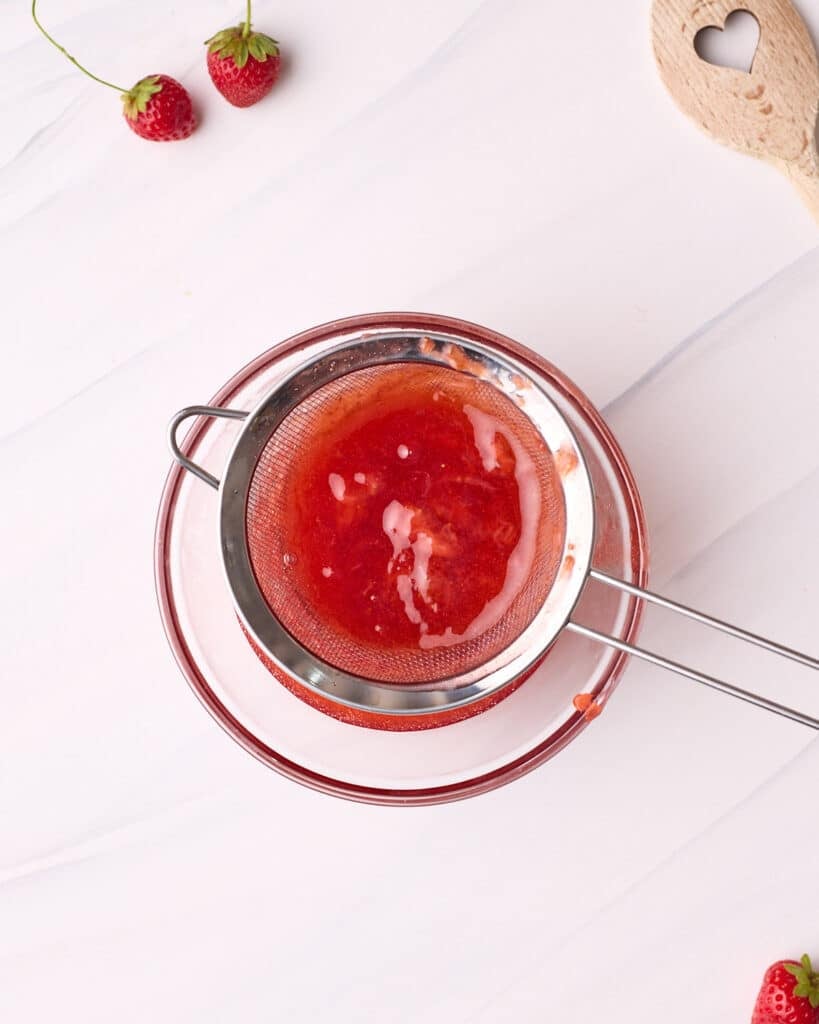
Strain
Remove the strawberry glaze from the heat and immediately pass it through a fine mesh sieve to remove all of the strawberry pulp.
You can use a spoon to gently stir or coax the liquid through, but don't press down into the pulp or force it through, as this will make your glaze cloudy.
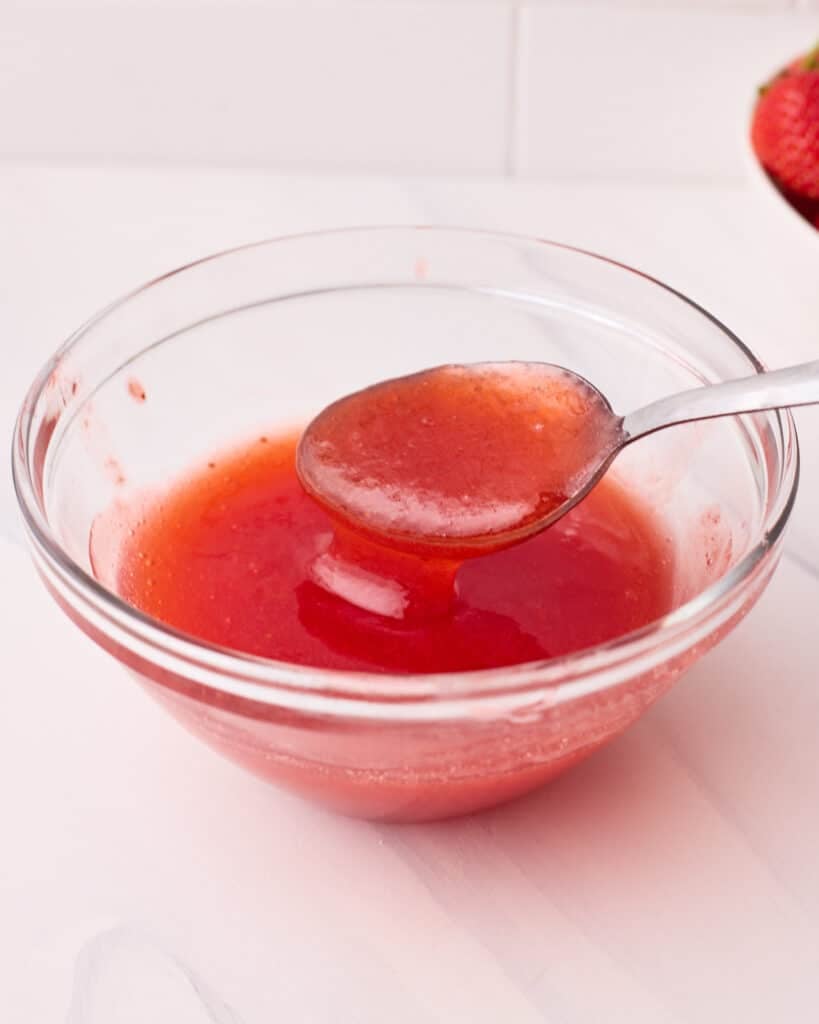
Cool
Let the glaze cool completely before using.
Strawberry Glaze Recipe Tips
Be sure to follow these expert tips to create the perfect strawberry glaze!
- Use Ripe Strawberries - Strawberries are best served at their sweetest and ripest, so be sure to buy them fresh when they're like this, and frozen when out of season. It will really make all the difference in this recipe, giving the glaze a deep strawberry flavor! If you're worried your strawberries aren't quite ripe enough, add in a little lemon juice to brighten up the flavor.
- Don't Cut Strawberries - Keeping the strawberries whole will leave you with a lovely clear glaze. If you're in a rush, or aren't worried about the clarity of the glaze, feel free to cut the strawberries into halves or quarters.
- Mash Carefully - During the cooking process, it's important not to mash up the strawberries completely. For best results, break them down a little bit to release as much juices as possible, which will mix nicely with the sugar. Turning them to a pulp will make the texture of the glaze thick and cloudy.
- Cool Before Drizzling - Depending on the recipe, let your strawberry glaze cool completely to room temperature before using it as a dessert topping.
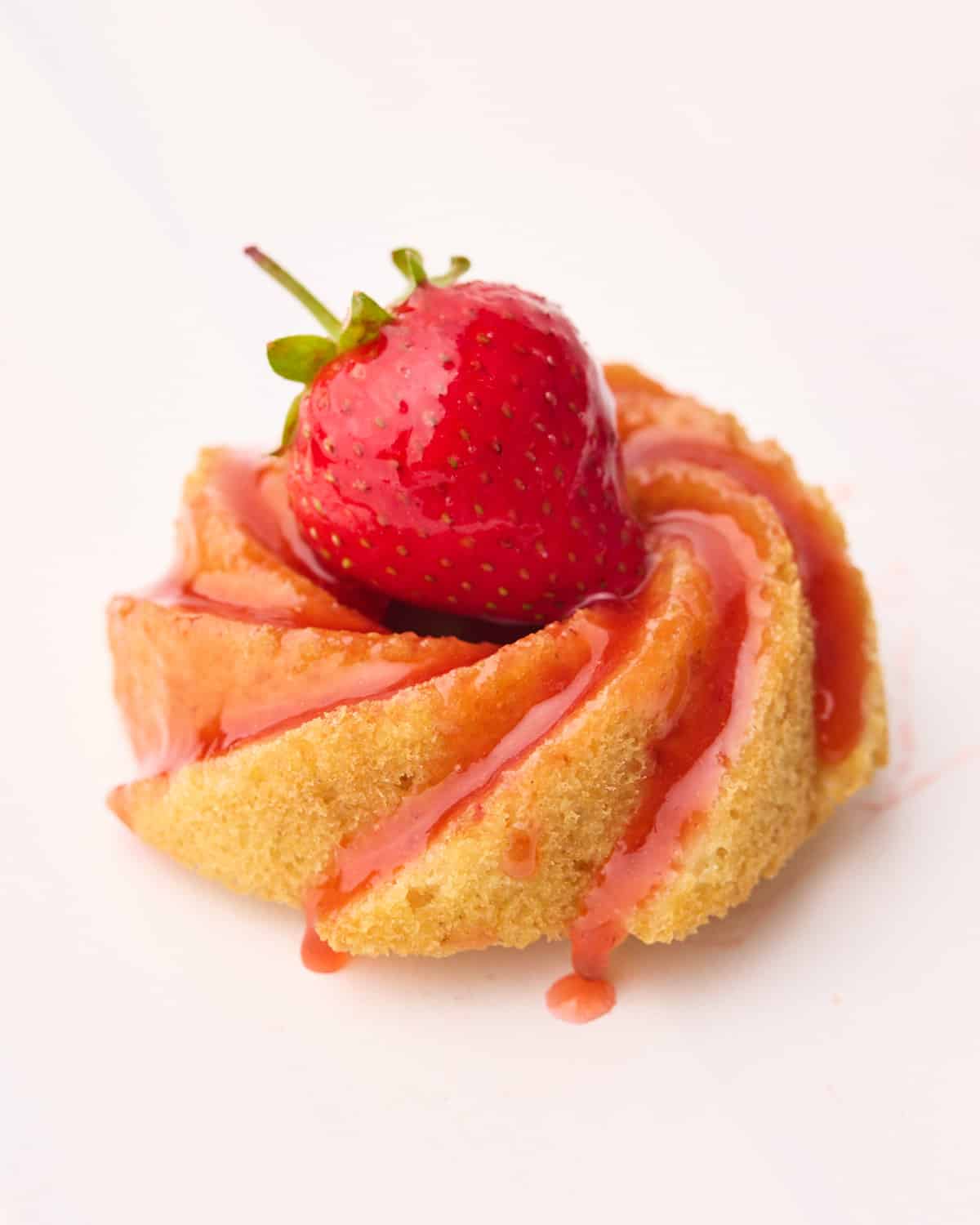
How To Use Strawberry Glaze
There are so many ways to use this delicious glaze to add a sweet, sophisticated finish to your bakes and desserts! Try out some of these ideas:
- Fruit Tart Glaze - This is the perfect glaze to add some shine to your fresh fruit tarts - it goes beautifully over my Strawberry Custard Tarts, as well as my fresh Strawberry Pie.
- Strawberry Topping for Cheesecake - It makes a gorgeous homemade strawberry sauce for cheesecakes and other creamy desserts. It is lovely to drizzle over my Strawberries and Cream or Strawberry Angel Food Cake.
- Strawberry Shortcake Glaze - Try sprucing up your traditional Strawberry Shortcake by adding some of this strawberry glaze on top.
- Ice Cream Sauce - Use this sticky strawberry glaze like a delicious strawberry sauce for ice cream.
- Strawberry Donut Glaze - Dip or drizzle some freshly fried donuts in this tasty glaze for a pretty n' pink finish.
- Breakfast Topper - Drizzle your fresh strawberry glaze over morning granola or fresh fruit and yogurt for extra sweetness.
- Fresh Strawberry Scones - Drizzle this glaze on top of some fresh berries on my fluffy Scone recipe for a sweet and simple breakfast.
Tip: If you are using this recipe as a glaze for fresh fruit or tarts, the best way is with a pastry brush - it will allow you to get the shiny topping into all the corners of the fruit, while being gentle enough not to displace it.
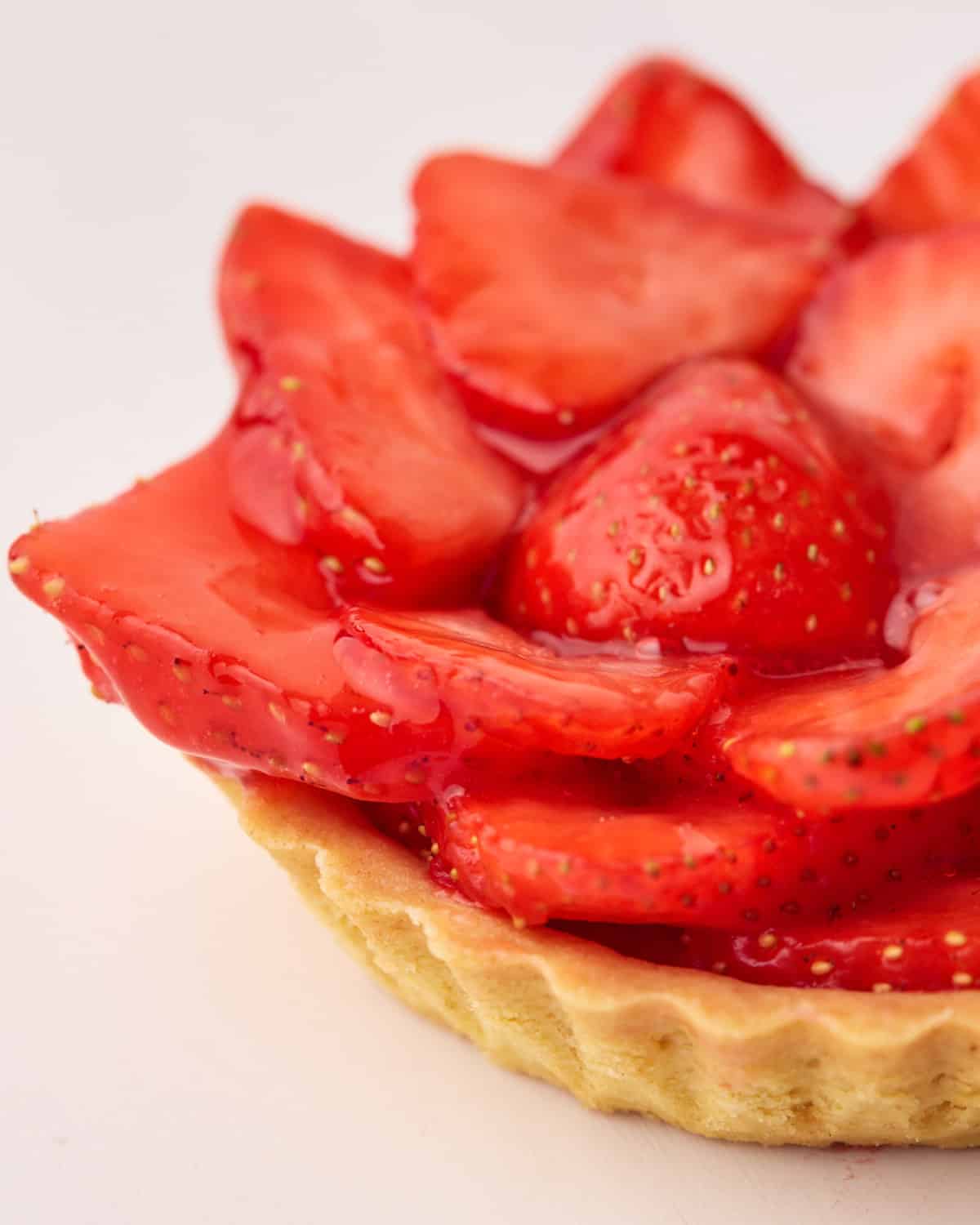
Strawberry Glaze vs Syrup and Puree
Glaze, syrup, puree...are they really that different? Although the ingredients are all pretty similar, these three strawberry delights turn out quite differently.
I've put together a little table to highlight the differences between strawberry glaze, strawberry syrup, and strawberry puree, and how you can use them to their full potential. You'll be an expert by the end of it!
| Strawberry Glaze | Strawberry Syrup | Strawberry Purée | |
|---|---|---|---|
| Texture | Glossy, lightly thickened, sets slightly | Thin, pourable, runny | Thick and smooth (like baby food) |
| Made with | Strawberries, sugar, cornstarch | Strawberries sugar, water | Blended strawberries, sugar |
| Clarity | Clear and shiny when strained | Clear and fluid | Opaque |
| Cooking? | Yes, with thickener | Usually yes, boiled longer | Not always - can be raw |
| Sets when cooled? | Slightly | No | No |
| Best for | Tarts, cheesecakes, fresh fruit topping | Drizzling over pancakes, drinks | Flavoring baked goods, dessert filling and topping |
As you can see, each version brings something unique to the table - the glossy finish of a glaze, the pourable sweetness of a syrup, or the fresh, fruity texture of a puree.
Now that you know the differences, you'll be able to choose the right one for whatever you're baking, drizzling, or blending and make some strawberry magic!
Troubleshooting
Even though strawberry glaze is a simple recipe, there are a few small things that can affect the texture or clarity. Here are some of the most common issues when making this strawberry glaze recipe:
- Glaze is cloudy instead of clear - This is usually because too much strawberry pulp has gotten into the glaze, either form mashing the strawberries too much, or from pressing the glaze through the fine mesh sieve too hard. To keep it clear and glossy, avoid over-mashing and strain as soon as taking it off the heat so it's easier to pass through the sieve.
- Glaze is too thick - This means either the glaze was reduced for too long or there was too much cornstarch added. You can add a splash of water or lemon juice to loosen it up while it's still warm. Next time add less starch or reduce the cooking time slightly.
- Glaze is too runny - This usually just means it needs to reduce for a little longer, you may have had extra juice strawberries that produced a lot of liquid. That's why it's important to pay attention to the cues that the glaze is ready, rather than relying on recipe times.
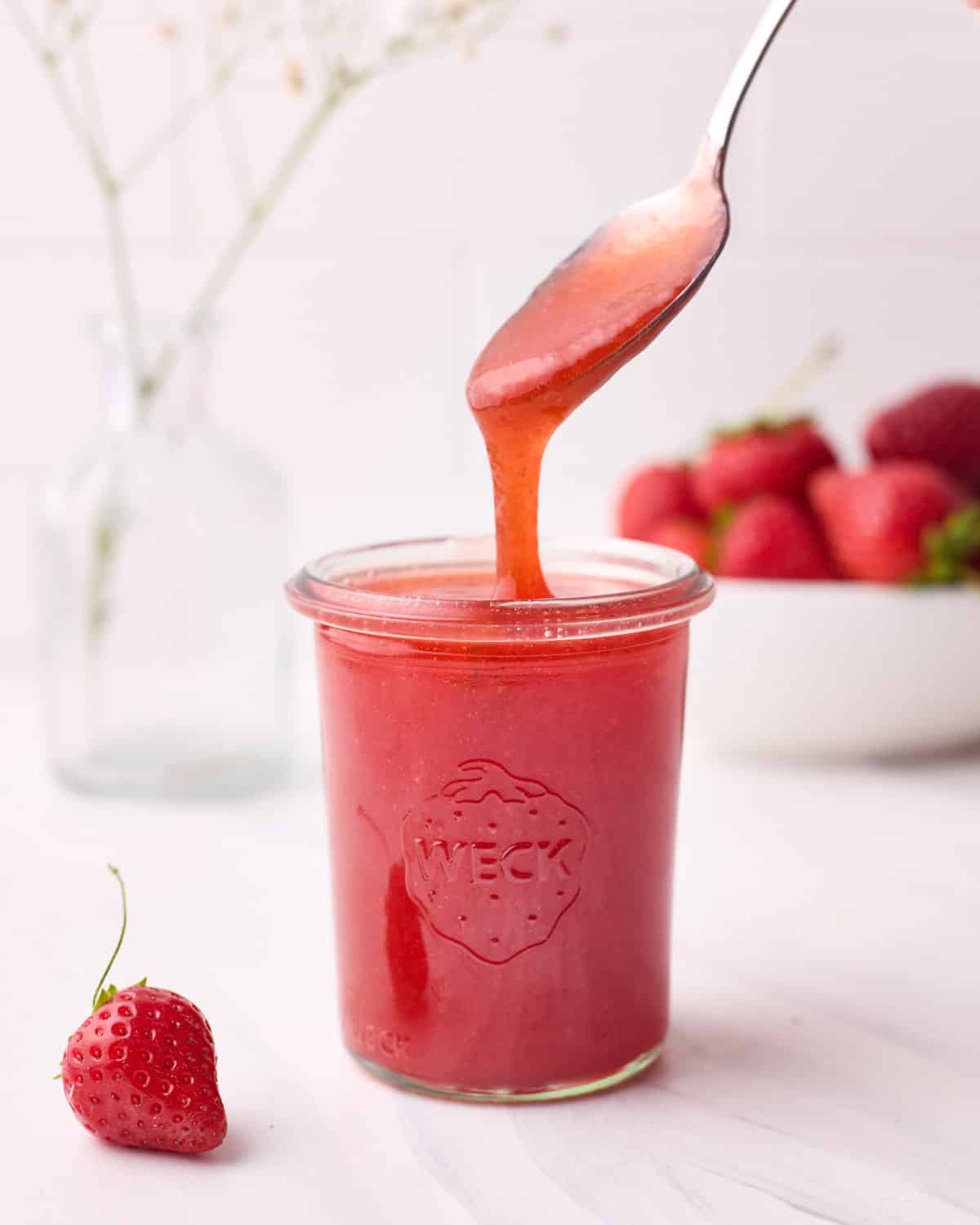
Strawberry Glaze Recipe Variations
Make this sweet strawberry glaze recipe your own with a few little tweaks! Try these changes next time:
- Texture - Glaze not your fave? For a thinner alternative, try my Strawberry Simple Syrup recipe (great for drinks and soaking cakes), and for a thicker fruitier option, take a look at my Strawberry Puree. You're spoiled for choice!
- Other Fruits - This is not a strictly strawberry recipe! Swap strawberries for raspberries, blueberries, blackberries, cherries, or peaches, or mix a few different fruits together to create a custom glaze that suits your dessert.
- Extra Flavor - Create a pop of flavor with your favorite additions! Try adding almond or vanilla extract, or a sprig of fresh mint or basil for an aromatic infusion.
How to Store Homemade Strawberry Glaze
Keep your tasty strawberry glaze in a glass jar or an airtight container, and store it in the fridge for up to 5 days. When you're ready to use it, reheat very gently to loosen it up again.
FAQs
If you have a question about this recipe that isn't answered here, feel free to write it in the comment section, and I will get back to you as soon as I can.
This recipe makes about a cup of strawberry glaze.
Yes! Strawberry glaze is a great baking element to make ahead of time as it freezes really well. Let your glaze thaw out in the fridge overnight, and give it a good stir before using.
This strawberry glaze is made up of just 3 ingredients: strawberries (fresh or frozen), sugar, and cornstarch.
Yes, frozen strawberries are a great alternative to fresh strawberries when they're not in season, to ensure the beautifully ripe flavors still shine through in your glaze. Frozen strawberries will release more liquid, so may take a few minutes longer to thicken.
Recipes With Strawberry Glaze
In need of some strawberry glaze inspo? Pair it with these delish desserts:
Recipe
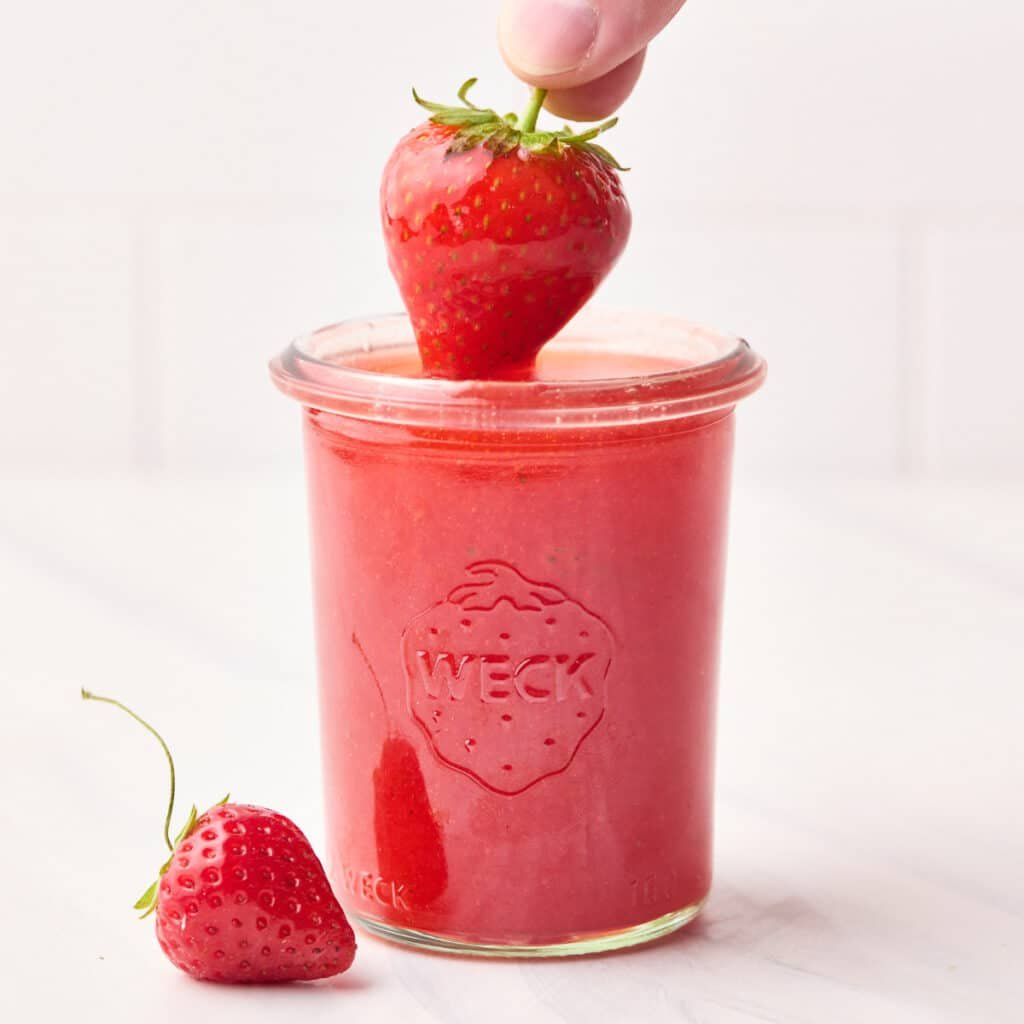
Strawberry Glaze Recipe
Ingredients
- ½ pound Strawberries 225g (fresh or frozen)
- ½ cup Granulated Sugar 100g
- ¼ cup Water 60ml
- 1 tablespoon Cornstarch
Equipment
Instructions
- Wash the strawberries and then hull them. If you want a nice, clear glaze, I recommend using whole strawberries (not halved or quartered) as slicing them releases more pulp and can make the glaze cloudy. However, if you don't care about clarity and want the glaze to cook faster, you can half or quarter the strawberries. Add the whole or sliced strawberries into a saucepan along with the sugar.½ pound (225 g) Strawberries, ½ cup (100 g) Granulated Sugar
- Stir the cornstarch into the water to make a slurry, then add that into the saucepan too.¼ cup (60 ml) Water, 1 tablespoon Cornstarch
- Heat the saucepan over medium-low heat, stirring constantly. As the mixture heats, the sugar will dissolve and the strawberries will start to soften and release juice.
- After a few minutes, you'll notice the liquid becoming rosy and slightly thicker. The strawberries should be softened now and starting to break down. Gently mash them with a potato masher or the back of your spoon - you don't want to mash them to a pulp, just help them break down a little and release their juices.
- Continue heating, stirring constantly until the mixture visibly thickens to a syrupy consistency. Once you see thick, slow bubbles bursting on the surface, test if it's ready by running your spoon or spatula along the bottom of the pan. if you can draw a trail across the bottom that takes a second to fill back in, it's ready. If you can't draw a line because it fills in immediately, keep heating for another minute or two, then test again.
- Remove the strawberry glaze from the heat and immediately pass it through a fine mesh sieve to remove all the strawberry pulp. You can use a spoon to gently stir or coax the liquid through, but don't press down into the pulp or force it through, as this will make your glaze cloudy.
- Let the glaze cool completely before using.

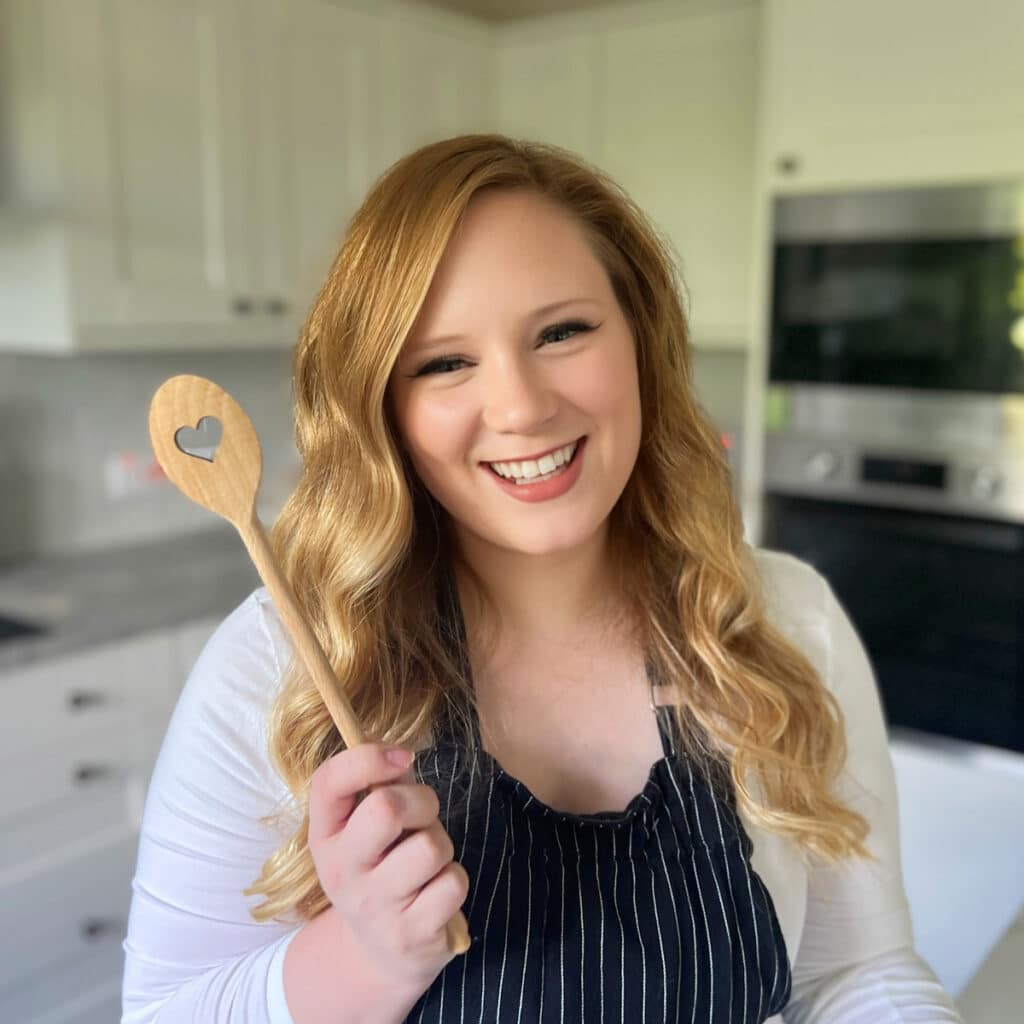
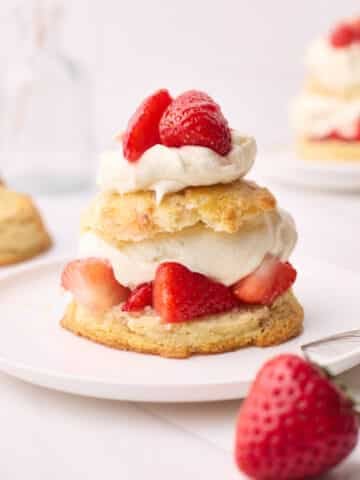
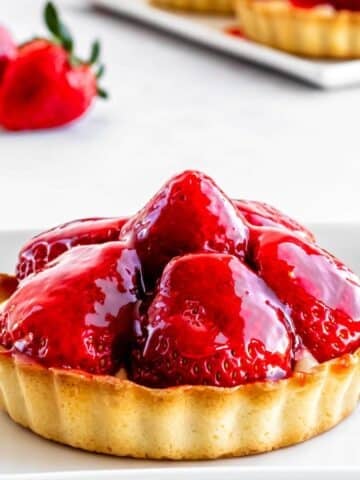
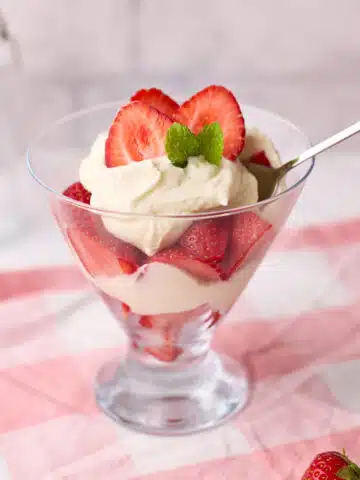
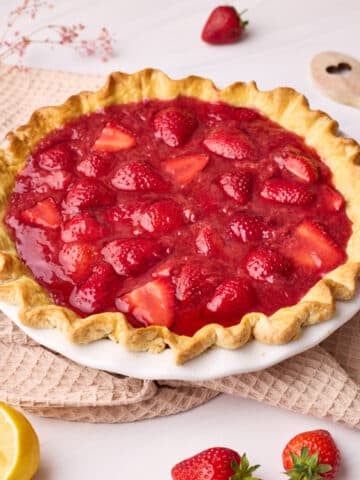
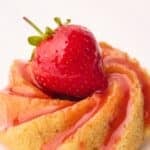
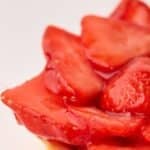
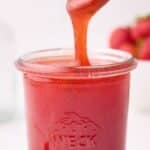





Hi, I'm Jules!
I'm a Scottish ex-bakery owner sharing my tried and true dessert recipes and expert tips to help you whip up impressive desserts at home.
Check out my baking blog and try a few recipes.
Or just lick the screen a little...
Happy Baking!